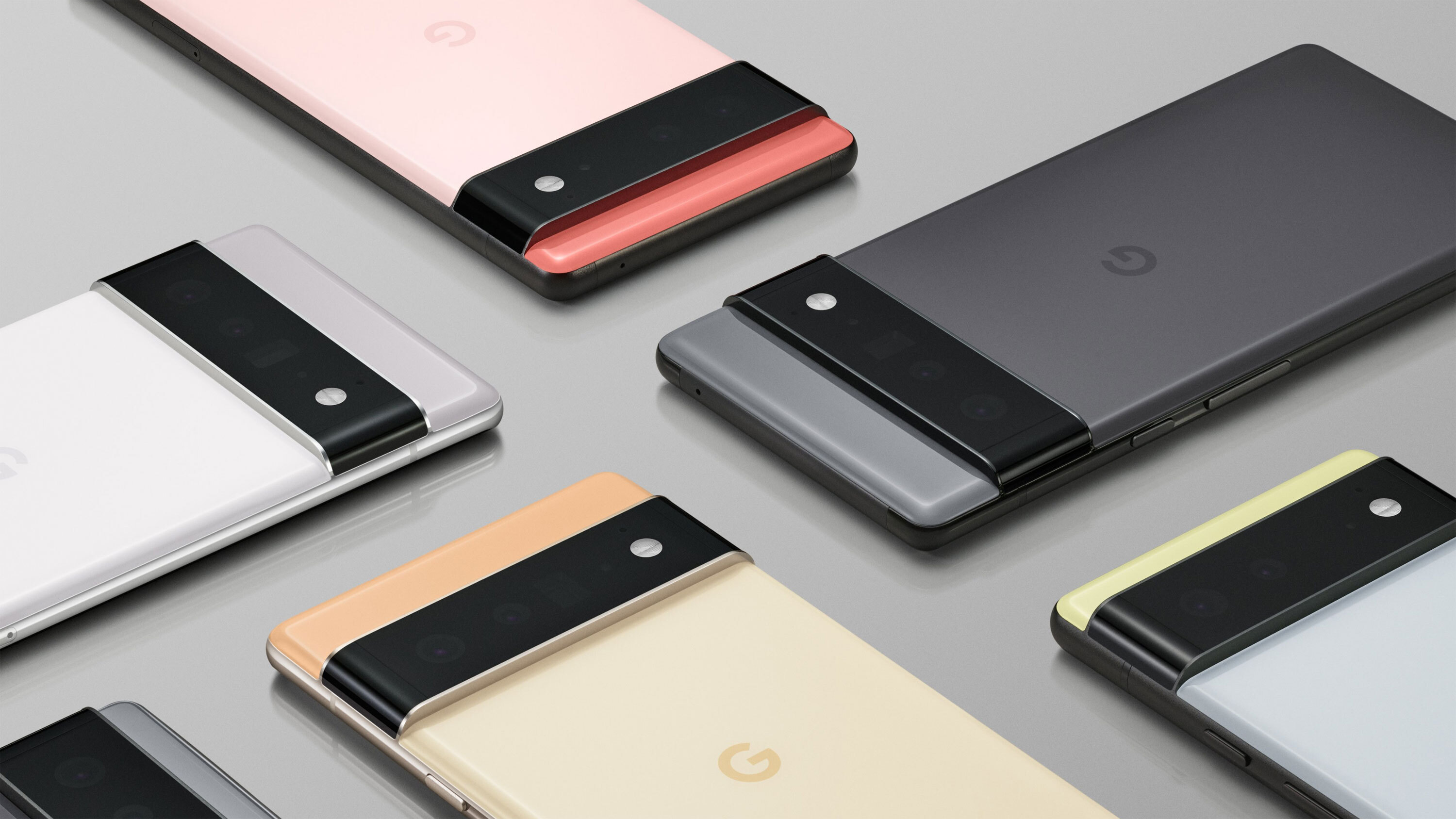Google Pixel 6 and Pixel 6 Pro are official, and they have a visor-like camera
The Google Pixel 6 is real, and Google has shown it off

The Google Pixel 6 and Pixel 6 Pro have been revealed, and it looks just as the rumors predicted: a sleek flagship phone with a visor-like camera block. It's also launching with Google's first chipset, the Google Tensor, with a planned launch in 'fall' (Q3 2021).
The Google Pixel 6 looks notably different from the Google Pixel 5, according to images shown off by an official Google tweet. The new phone ditching an all-metal matte black back for a horizontal camera block that splits the rear into two distinctly-colored sections.
Here's a sneak peek at the newest Google Phones powered by Google Tensor - the brand new chip designed by Google, custom-made for Pixel. Meet:📱 #Pixel6📱 #Pixel6 ProBoth are coming later this year.We’ll tell you a little about them in this 🧵 👇(1/13) pic.twitter.com/SRhzvRA7WCAugust 2, 2021
Thankfully, Google hasn't been stingy on the details – that tweet is one of thirteen explaining all about the phone. Here are the top-level takeaways:
- The Pixel 6 and Pixel 6 Pro will each have three different color combinations - see below (the Pro has more space above its 'camera bar', so the three central models are Pro)

- Pixel 6 = 2 cameras (main and ultrawide, we guess), Pixel 6 Pro = 3 cameras (same with 4x optical telephoto)
- Otherwise, the phones don't seem to differ aside from size
- Pixel 6 phones both powered by the Google Tensor chipset, Google's first SoC
We made a chip!#Pixel6 is powered by our first ever smartphone SoC: meet Google Tensor(5/13) pic.twitter.com/0Kts53TfqmAugust 2, 2021
- Tensor's AI and machine learning processes will improve camera, speech recognition, and other features – especially improving voice commands, translation, captioning and dictation, features that have set the Pixel phones apart from the pack
- Naturally, Google is boasting that the Material You UI upgrade introduced at Google IO 2021 will be best on the new Pixel 6 phones – here's a Material You refresher
Separately, we know the Google Pixel 6's two cameras will be a main and ultra-wide and its selfie camera will be positioned in the middle of the front display thanks to Marques Brownlee's new video made after he claims to have handled one of the phones.
Brownlee also revealed a few other tidbits: the Pixel 6 Pro will have an around 6.7-inch display, and the rails (top and bottom edges) of the camera bar will be glossy silver on the Pro phones and matte black on the standard handsets. Neat!
Brownlee went even further in on the Tensor chipset itself, explaining that the new silicon gives Google the opportunity to switch out the same photo sensor it's been using since the Pixel 2 for a new one tailored to its brand-new SoC.
But he also emphasized how Tensor enables the Pixel 6 phones to decode voice and process it on-device (as opposed to on Google servers) for faster responses from Google Assistant and other vocal interface features.
Sign up for breaking news, reviews, opinion, top tech deals, and more.
Analysis: Pixel 6? Where's the mid-range Pixel 5a?
The Google Pixel 6 wasn’t shown off at Google IO 2021 back in May, but that's not surprising – Google often waits to show off its flagship, which typically launches in October. What is surprising is that we haven't heard anything official about the mid-range Google Pixel 5a, given that its predecessor launched around this time last year.
What's more, a Bloomberg report suggested Google would announce and release the Pixel 5a in August, and there's plenty of time in the month left for the company to reveal it.
But Google has only mentioned that its Pixel 5a 5G will come out in the US and Japan, so either the mid-range phone will get a far more limited release than the Google Pixel 4a – or Google will only release a 4G LTE version globally.
Those aren't the only questions, of course – will the Pixel 5a just inherit the Pixel 5's perks, or will it get a taste of Tensor, too? We'll have to wait until Google officially reveals the phone.
- Stay on top of tech news with the TechRadar newsletter

David is now a mobile reporter at Cnet. Formerly Mobile Editor, US for TechRadar, he covered phones, tablets, and wearables. He still thinks the iPhone 4 is the best-looking smartphone ever made. He's most interested in technology, gaming and culture – and where they overlap and change our lives. His current beat explores how our on-the-go existence is affected by new gadgets, carrier coverage expansions, and corporate strategy shifts.